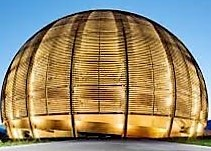Speaker
Description
Approximately 30 stable nuclides on the neutron-deficient side of stability cannot be produced via the same neutron-capture driven mechanisms responsible for synthesizing all other elements heavier than iron. These “p-nuclei” are instead thought to originate from photodisintegration reactions on s- and r-process seed nuclei, which can occur in the extreme high-temperature environments of core-collapse supernovae. However, significant discrepancies exist, in some cases extending to orders of magnitude, between observed p-nuclei abundances, obtained via isotopic analysis of meteorite samples, and supernovae model predictions. Improvements on the available nuclear reaction data is an essential part of solving the puzzle of the p-nuclei, but experimental efforts in this regard must overcome significant technical challenges. This talk will describe the first ever measurement of a p-process reaction cross-section obtained with a radioactive ion beam. The 83Rb(p,γ)84Sr reaction was investigated at the TRIUMF-ISAC facility using a radioactive 83Rb beam impinged on CH2 foil targets. The recoiling reaction products were selected by m/q using the newly commissioned Electromagnetic Mass Analyser (EMMA), with γ-rays detected in-coincidence using the TIGRESS HPGe array. The selectivity of the EMMA-TIGRESS set-up allowed for detection of low-lying transitions in 84Sr populated by 83Rb(p,γ)84Sr. The measured partial cross-section was then combined with statistical model calculations to obtain a total reaction cross-section that is 4x smaller than predicted, in-turn affecting the abundance of the 84Sr p-nucleus predicted by massive-star models.
